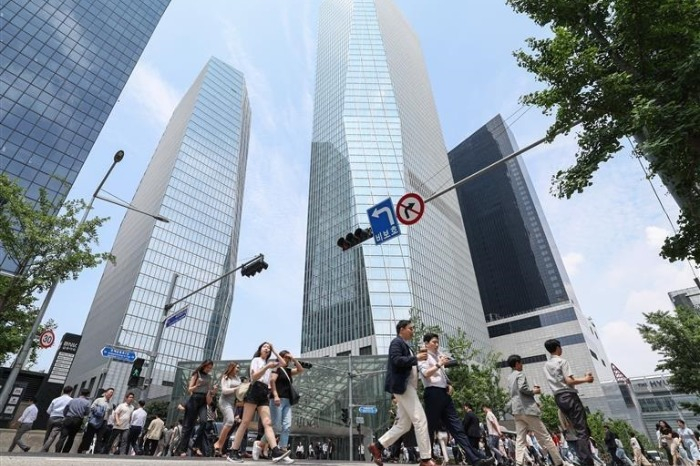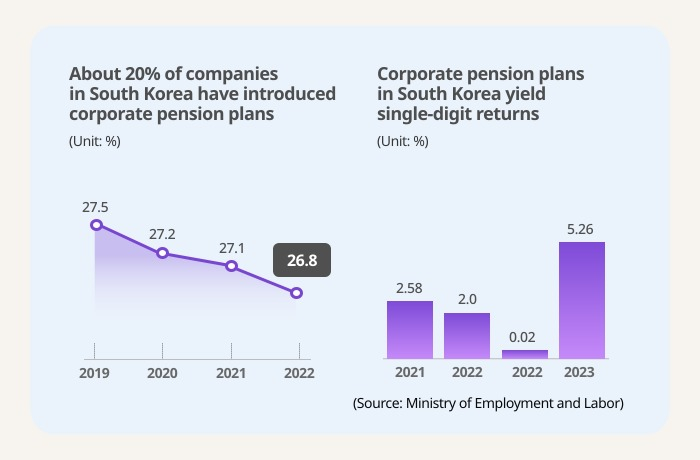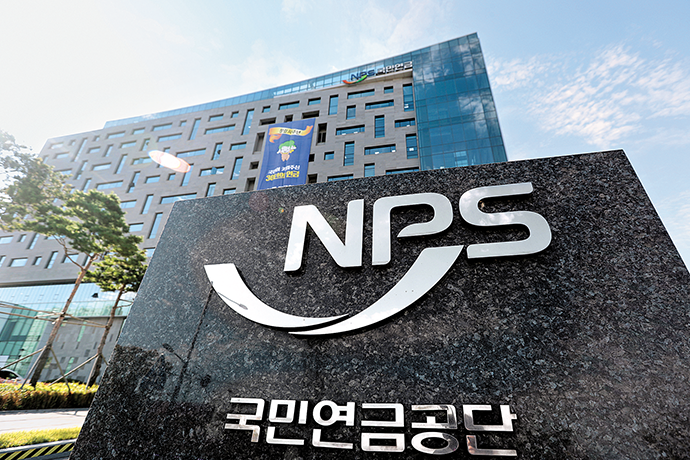Pension funds
Korea may mandate pension plans for all workplaces from 2025
The government is proposing subsidies and incentives to encourage small companies to implement pension plans
By Jun 11, 2024 (Gmt+09:00)
3
Min read
Most Read
Samsung steps up AR race with advanced microdisplay for smart glasses


When in S. Korea, it’s a ritual: Foreigners make stops at CU, GS25, 7-Eleven


Maybe Happy Ending: A robot love story that rewrote Broadway playbook


NPS yet to schedule external manager selection; PE firms’ fundraising woes deepen


US auto parts tariffs take effect; Korea avoids heavy hit



South Korea is seeking to introduce corporate pension plans to all workplaces in stages starting next year, alongside mandatory contributions to the National Pension Service (NPS).
To boost returns on corporate pensions, the government is considering involving public pensions such as the NPS, the world’s No. 3 pension scheme, in their management.
To motivate small and medium-sized companies to implement retirement plans, the government is looking to offer subsidies, while imposing fines on business owners that fail to adopt the pension plans, according to government officials on Monday.
On June 20, Minister of Employment and Labor Lee Jung-sik will hold a closed-door meeting with Financial Supervisory Service Governor Lee Bok-hyun to discuss making the pension plans mandatory even for family businesses. The move requires revisions to the law.

Under the current law, companies established after 2012 must implement retirement pension plans; those established before can operate either severance pay systems or retirement pensions.
But the subscription rate for retirement pensions remains low, which regulators blamed on the absence of penalties for not enforcing them.
According to the Ministry of Strategy and Finance, only 26.8% of 1,595,000 workplaces in the country have adopted retirement pensions as of the end of 2022.
The government is considering introducing retirement pension plans to workplaces with more than 100 employees from next year.
It will then expand the system to smaller companies, those with between 30 and 99 employees, within two years of the relevant law's enforcement.
Companies with fewer than five full-time workers will be subject to the mandatory pension scheme within six years of the law coming into force.
| South Korea is considering offering incentives as follows for small and medium-sized companies to adopt employee pension plans: |
| 1. Provides subsidies, including the government covering about 10% of employers’ contributions |
| 2. Waives pension management fees for a certain period |
| 3. Involves public pension schemes such as the National Pension Service to manage pension plans on their behalf |
Unlike severance pay, the retirement pension system can guarantee workers' retirement pay even when the company's financial situation worsens, such as through bankruptcy.
South Korea introduced corporate pension plans in the wake of the Asia financial crisis in the late 1990s after a large number of companies went into bankruptcy and failed to pay severance.
Currently, companies must deposit 8.33% of the monthly income of workers employed for more than one year to financial companies. The subscription rate has been on the decline since 2019, however.
The retirement pension subscription rate at workplaces with 300 or more full-time workers reached 70.5% as of the end of 2022.
By comparison, only 30.0% of companies with five to nine employees, and 11.9% of businesses employing fewer than five employees contribute to retirement pensions.

The Ministry of Employment and Labor commissioned a study early this month on measures it may implement to encourage small business owners to introduce corporate pension plans.
RATES OF RETURNS
Still, poor returns make them hesitant to adopt retirement pensions.
According to the Ministry of Employment and Labor, the average annual rate of return on retirement pensions over the past five years stands at only 2.35%.
That is far below the 3.6% gain in South Korea’s consumer prices in 2023 on average and the NPS’ 7.63% return over the same period.
The disappointing performance is attributed mainly to Korean pension subscribers’ tendency to put retirement money into bank deposits and safe-haven assets that guarantee principal payments.
They need to choose investment products on their own through outside financial services companies, whether they have defined benefit or contribution plans.
To supplement the system, the government is understood to consider involving public institutions such as the NPS in managing corporate pensions.
Write to Kyung-Min Kang and Yong-Hee Kwak at kkm1026@hankyung.com
Yeonhee Kim edited this article.
More to Read
-

-
 Corporate investmentLG Electronics breaks ground on $600 mn home appliance plant in India
Corporate investmentLG Electronics breaks ground on $600 mn home appliance plant in India9 HOURS AGO
-

-
 E-commerceCoupang’s Q1 revenue up; quarterly dip signals rising competition
E-commerceCoupang’s Q1 revenue up; quarterly dip signals rising competitionMay 07, 2025 (Gmt+09:00)
-
 Asset managementKorea Investment & Securities deepens global ties with 2nd IR in New York
Asset managementKorea Investment & Securities deepens global ties with 2nd IR in New YorkMay 07, 2025 (Gmt+09:00)
Comment 0
LOG IN


